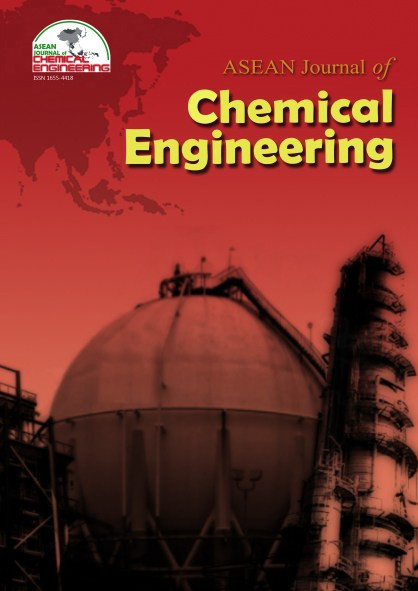Effect of Ethylene-Vinyl Acetate Copolymer on Properties of Acrylonitrile-Butadiene-Styrene/Zinc Oxide Nanocomposites
Abstract
Mechanical and morphological properties of acrylonitrile-butadiene-styrene (ABS)/zinc oxide (ZnO) nanocomposites used ethylene-vinyl acetate copolymer (EVA) as compatibilizer were investigated. The ABS/ZnO nanocomposites without and with EVA 4 wt% were prepared by melting-blend with an internal mixer. The results showed that the addition of ZnO nanoparticles did not improve the mechanical properties of ABS/ZnO nanocomposites. The impact strength of the ABS/ZnO nanocomposites decreased with increasing ZnO content. The addition of EVA in ABS showed a decrease the impact strength but increased after adding ZnO in ABS/EVA matrix. The ABS/ZnO nanocomposites with EVA was higher the percent strain at break, but lower Young’s modulus, tensile strength and impact strength than the neat ABS and ABS/ZnO nanocomposites. The percent strain at break of ABS/ZnO nanocomposites increased with incorporation of EVA all ZnO compositions. However, the poor compatibility between ethylene in EVA and ABS matrix reduced as most of the mechanical properties of ABS/EVA/ZnO nanocomposites. The ZnO particle distributions in nanocomposites were studied by scanning electron microscopy (SEM), which observed that ZnO particles agglomerated in ABS and ABS/EVA matrix. The fractured surfaces of impact test samples were also observed through SEM and revealed that the ductile fracture of ABS was converted to brittle fracture with addition of ZnO.
References
2. Chae, D. W., and Kim, B. C. (2005). Characterization on polystyrene/zinc oxide nanocomposites prepared from solution mixing, Polym. Advan. Technol., 16, 846.
3. Deka, B. K., and Maji, T. K. (2012). Effect of nanoclay and ZnO on the physical and chemical properties of wood polymer nanocomposite, J. Appl. Polym. Sci., 124, 2919.
4. Kar, K. K., Srivastava, S., Rahaman, A., and Nayak, S.K. (2008). Acrylonitrile- butadiene-styrene nanocomposites filled with nanosized alumina, Polym. Compos., 29, 489.
5. Kontou, E., and Anthoulis, G. (2007). The effect of silica nanoparticles on the thermomechanical properties of polystyrene, J. Appl. Polym. Sci., 105,
1723. 6. Pöllänen, M., Pelz, U., Suvanto, M., and Pakkanen, T. T. (2010). Effective method
for dispersing SiO2 nanoparticles into polyethylene, J. Appl. Polym. Sci., 116,
1218.
7. Wang, W., Wang, G. Q., Zeng, X. F., Shao, L., and Chen, J. F. (2008). Preparation and properties of nano-CaCO3/acrylonitrile- butadiene-styrene composites, J. Appl. Polym. Sci., 107, 3609.
8. Yang, K., Yang, Q., Li, G., Sun, Y., and Feng D. (2006). Morphology and mechanical properties of polypropylene/calcium carbonate nanocomposites, Mater. Lett., 60, 805.
Copyright holder for articles is ASEAN Journal of Chemical Engineering. Articles published in ASEAN J. Chem. Eng. are distributed under a Creative Commons Attribution-NonCommercial 4.0 International (CC BY-NC 4.0) license.
Authors agree to transfer all copyright rights in and to the above work to the ASEAN Journal of Chemical Engineering Editorial Board so that the Editorial Board shall have the right to publish the work for non-profit use in any media or form. In return, authors retain: (1) all proprietary rights other than copyright; (2) re-use of all or part of the above paper in their other work; (3) right to reproduce or authorize others to reproduce the above paper for authors’ personal use or for company use if the source and the journal copyright notice is indicated, and if the reproduction is not made for the purpose of sale.



